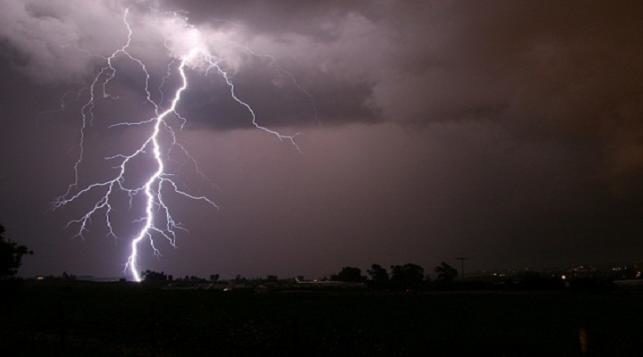At least 17 persons were killed by lightning strikes across the State on Monday taking the toll to 35 in the last 48 hours. Six of the deaths came in from Sambalpur and Cuttack districts. At least three persons were killed while working in the farm fields in Cuttack's Athagarh sub-division. The victims were identified as Ashok Biswal (30), Santosh Rout (45) and Hadibandhu Sahoo. They were declared dead by doctors at Sub-Divisional Hospital in Athagarh.
Eight students of the sub-division headquarters were also struck by lightning and had to be hospitalised. They were released after treatment. All of them belonged to Rasrasikpur UGME UP School. President of the school was also hurt while taking the students to the hospital.In Sambalpur, three persons were struck by lightning whereas Bargarh recorded two more deaths. In neighbouring Deogarh district, another lightning casualty was reported.
Similarly in Mayurbhanj district, Bijay Kumar Nayak, a resident of Arapata village under Badasahi police limits, was killed by lightning strike. Nayak was struck when he was bathing his cow near a pond during the afternoon. In Khurda, Angul and Puri's Astarnga, one death each was reported.Two women were killed and two others injured as lightning struck them in Ganjam district. Three women were returning from farm work at Dihapadhal under Bhanjanagar police limits when they were hit by lightning. While one died, two others sustained injuries. Similarly, Nayani Rauta of Badiambagaon village under Hinjili police limits died in a farmland.
On the outskirts of Bhubaneswar, lightning strike killed two persons in Chandaka police station limits. The two were identified as Nibas Swain (43) and Kailash Champia (60). On Sunday, 18 persons had perished in separate incidents of lightning and the State Government announced '4 lakh as statutory ex gratia to kin of each victim. Although such severe lightning is recorded during April-May, and not in July-August, experts said, the current weather pattern is similar to how Norwester occurs and is behind formation of cumulonimbus clouds triggering thunderstorms and severe lightning.
The westerly and north-westerly wind pattern and high humidity leads to convective cloud formation but at lower levels. This leads to sudden downpour with lightning. "In summer months, the clouds are formed at a height of 12 to 15 km in the atmosphere. In the current scenario, the formation is at much lower level. When two inversely charged areas of matter are so close, lightning finds human beings and animals in herds in vast open areas as good conductors," said Director, India Meteorological Department Sarat Chandra Sahu.He said, buildings are safe places to take shelter. Cars and buses are also safe but one must stay clear of the body of the vehicles. "If you are in an open space, the best way to escape a lightning strike is to get on your knees and drop your head," Sahu suggested.

Reader Comments
to our Newsletter